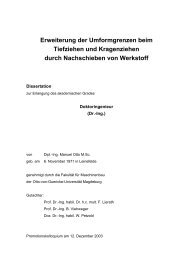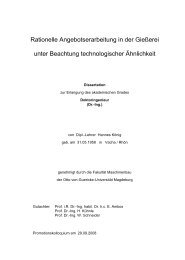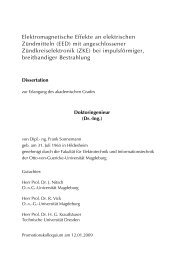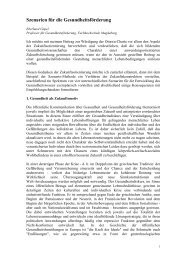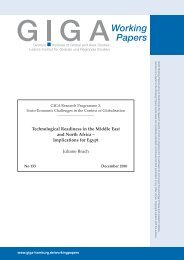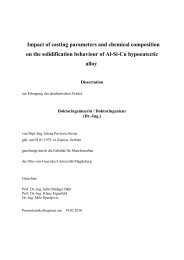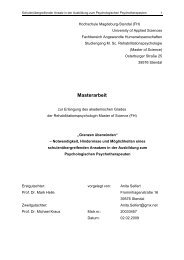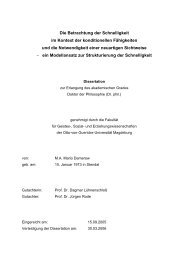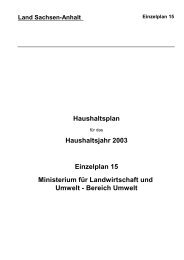Chapter 1
Chapter 1
Chapter 1
You also want an ePaper? Increase the reach of your titles
YUMPU automatically turns print PDFs into web optimized ePapers that Google loves.
the budget deficit rose. The domestic banking sector sharply trade deficit make Tunisia's external position vulnerable to<br />
declined in importance as a source of deficit financing-its adverse developments in the region's economic and politishare<br />
fell from about 28 percent in 1986 to 9 percent in 1991 cal stability. Faced with an adverse economic or political<br />
before turning negative in 1992 and 1993. Therefore, non- shock, it would be rather difficult under current internabank<br />
domestic financing became the main source of funds tional conditions to finance a larger current account<br />
to cover the budget deficit. (Box 1.1 discusses the evolution deficit-because of both higher interest rates in developed<br />
of public debt instruments since 1989.) countries and less optimism towards emerging markets<br />
(partly as result of the Mexican crisis). However, Tunisian<br />
Conclusions authorities have demonstrated, as in their handling of the<br />
Gulf crisis repercussions on Tunisia in 1990 and 1991, their<br />
The reform program initiated in 1986 has brought a signifi- determination to avoid serious balance of payments disecant<br />
degree of macroeconomic stability and a much quilibria. Imposing trade restrictions (as in 1991) is effecimproved<br />
level of efficiency in the use of resources in tive in the short run to deal with balance-of-payments imbal-<br />
Tunisia. The inflation rate is approaching that of the EU ances; but in the long run, only policies that encourage<br />
countries, the central-government primary balance has been competition, stimulate flexibility of wages and relative<br />
in surplus since 1992, the ratio of tax revenues to GDP is prices, induce higher public and private savings (which are<br />
higher than the respective average for the Latin American, all goals of the Tunisian structural reforms), and allow for a<br />
Southeast Asian, and Middle Eastern regions. market-determined exchange rate (which is the motivation<br />
Notwithstanding such important accomplishments, there behind the introduction of the interbank foreign-exchange<br />
remain some areas in both the guiding principles and fine- market) result in a socially efficient, sustainable external<br />
tuning of monetary, balance-of-payments, and fiscal policy position.<br />
that merit further improvement. An examination of the behavior of national savings and<br />
investment shows that the worsening of the current account<br />
Monetary policy deficit from 1989 to 1993 was accompanied by a rise in both<br />
savings and investulent, with the latter increasing at a faster<br />
Further liberalization of interest rates is essential to obtain rate. To the extent that external savings are being used to<br />
a market-driven yield curve. This can be accomplished by finance higher and better-quality domestic investment, the<br />
eliminating all remaining preferential rates, encouraging sustainability of the current account deficit is preserved.<br />
competition among commercial banks on the basis of both This confirms the conclusion in the above paragraph that<br />
interest rates and portfolio quality, and promoting a sec- Tunisia's external position is secure to the extent that the<br />
ondary market in Treasury securities through the removal of<br />
restrictions in their clearance and settlement procedures.<br />
structural reforms are implemented.<br />
These changes will also allow the BCT to control monetary<br />
expansion through system-wide open-market operations in<br />
Fiscal policy<br />
Treasury bills rather than by allocating funds on a bank-by- Generalizing the VAT and broadening the income-tax base<br />
bank basis. System-wide monetary expansion, market-dri- will both reduce the reliance on foreign-trade taxes and<br />
ven interest rates, and a thriving secondary market in gov- increase total tax revenues. These improvements and coneinment<br />
securities are all necessary elements for the trolling the expansion of the government wage bill are necefficient<br />
conduct of monetary policy, whose goals consist of essary not only to compensate for a likely future decline in<br />
achieving price stability and minimizing GDP fluctuations petroleum sector revenues but most importantly to finance<br />
around its full-employment level. increased expenditures in infrastructure, education, and<br />
public health.<br />
Balance of payments and exchange rate policy Although the deficit of the central government seems to<br />
be well under control, there remains the question of the<br />
Tunisia's rather sizable trade deficit and the large role of sustainability of the consolidated-government deficit, for<br />
tourism receipts and workers' remittances in financing the which accurate information is unavailable. Some data on<br />
12 TuNI'siAs GLOBAL INEGRATION AND SuniABLE DEVmLOPMEmp STRATEGIC CHOICES FOR THE 21sT CENTURY



